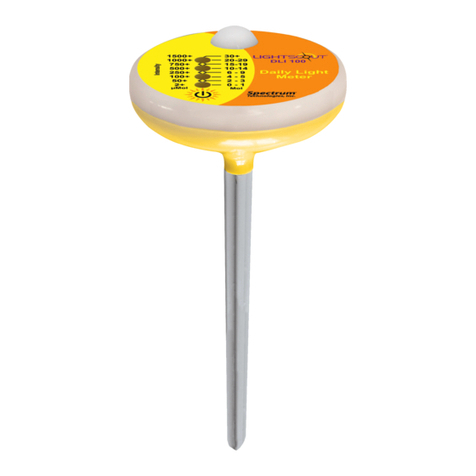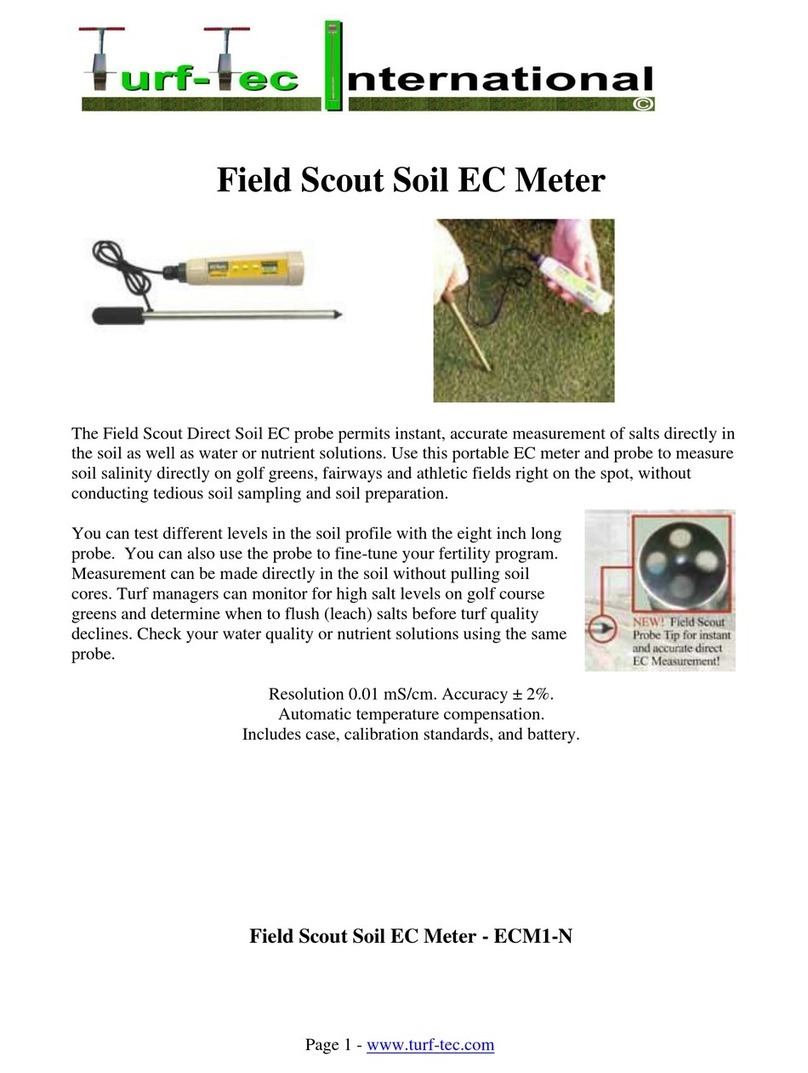Factory Reset
1. Press MENU/▼to scroll to Reset option.
2. Press HOLD. The display shows options
3. Press MENU/▼to select Factory Reset. Press HOLD.
4. The display automatically shows No and Yes. Use MENU/▼to scroll to the
desired option.
5. Press HOLD to confirm selection. Display shows Factory Reset option with a
checkmark. Taking Measurements
The procedure below illustrates the general process for taking EC readings. When
taking measurements in liquids, ensure that the tip is fully immersed and not
touching the side of the container. Stir and let the reading stabilize. Information on
measuring other media are given in subsequent sections.
1. If necessary, power on the tester.
2. The timer icon will blink during this time. Once the reading is stabilized, the
timer stops blinking and will appear to indicate the stability of the reading.
3. Note the value or press HOLD to freeze the reading. To release the reading,
press HOLD again.
4. Press and hold the power button for 5 seconds to turn off tester. If key is not
pressed for 8 ½ minutes, the tester will automatically shut off to conserve
batteries. Probe Calibration
Conductivity, TDS, or Salinity
For best results, periodic calibration with an accurate standard is recommended prior
to measurement. Prior to calibration, the tip of the probe should be cleaned with
alcohol. The tester will retain one calibration value in each mode (conductivity, TDS,
salinity) when the instrument is powered off. The conductivity value can be calibrated
automatically or manually. The TDS and salinity values require manual calibration.
The tester will begin in the measurement mode that was used when it was powered
off. See Measurement Parameter Setting (p. 6) for how to change the desired
parameter. Note: It is strongly recommended that calibration be done with 1.41
mS/cm solution. Manual calibration is possible with other solutions, but there are EC
concentrations for which even manual calibration cannot be done.
Automatic Calibration (Conductivity only)
1. Power on the meter.
2. Completely immerse the tip in calibration standard.
3. Stir gently and press the CAL/ESC button to begin the calibration. The meter will
briefly display the Key Info screen before transitioning to the Cal screen.
4. The display will show CAL in the upper left corner. The values for automatically
recognized standards (84 μS/cm, 1413 μS/cm, and 12.88 mS/cm) will cycle beneath
the meter value.
5. If the reading is within the calibration range of one of the standards, the cycling
will stop, and a check mark icon is displayed at the top of the screen.
6. Press HOLD to accept the auto conductivity standard and finish the calibration.
7. Display returns to Measurement window.





























